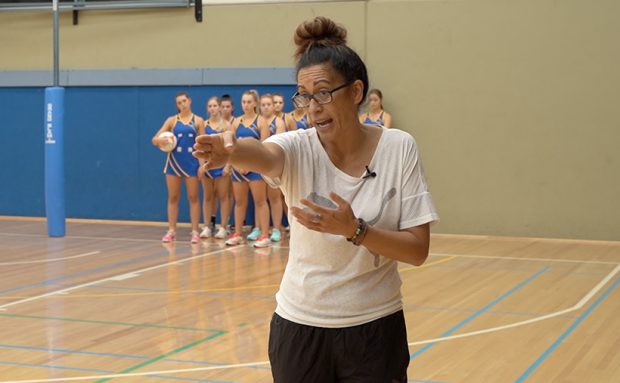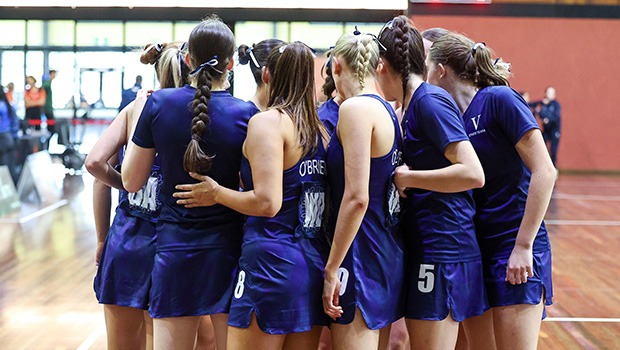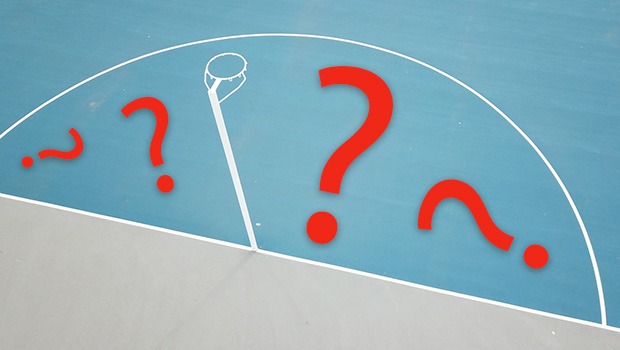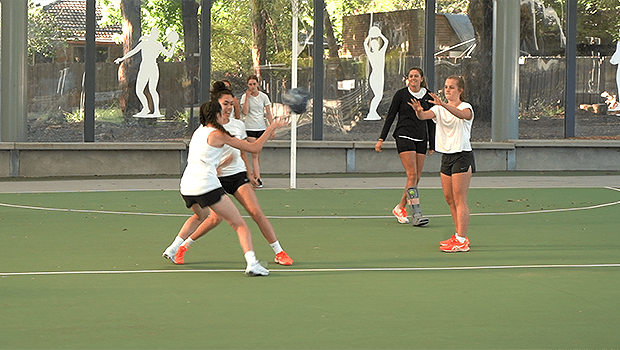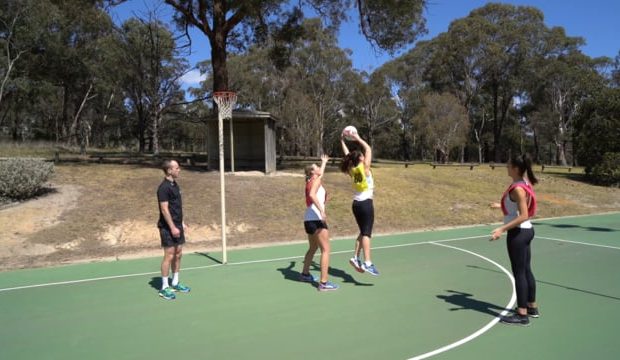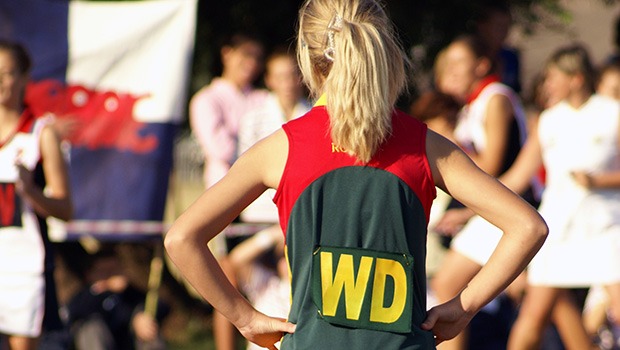
In the next of our series of tips on the some of the position-specific things you can watch for as netball selectors, we’re looking at the midcourt!
Here are key skills you can look out for when selecting each of the three midcourt positions.
WING ATTACK
HITTING THE CIRCLE
In a normal game, the team’s success can often rest on whether the goalers are having a good night or not. But at trials we’re not looking at the overall scoreline when it comes to selecting our midcourt. Rather, we need to be looking at how many opportunities the wing attack is providing the goalers to score. Noting how often and how well the wing attack is able to get to circle edge (and receive a pass) is a good place to start. Do they have a variety of preliminary moves in their toolkit to enable them to get free onto the ring? How often do they hit the prime feeding space at the top of the circle, versus taking tough contested balls deep in the pocket? Start to consider some of these simple factors and the standouts might start to emerge.
DECISION-MAKING AND EXECUTION
Of course, there’s no point nailing a drive onto the top of goal circle if the next pass hits the back wall. Again, it’s about looking at the number and consistency of opportunities the wing attacks are giving the goalers to score. Are they placing the ball into space and to the goalers’ advantage, or are they passing the ball to a contest and giving the defenders a chance? Given how often a good WA will handle the ball in the attack end, it’s important to look at their decision-making and basic skill execution. For younger or lower levels, look for players who open their shoulders to see the whole court before passing, enabling them to see all options. For more advanced levels, look for players who are able to see beyond the mess in front of them, and pick out good options further down the court, or at the post.
PREPARATION ON CENTRE PASS
Ever watch Kelsey Browne do what looks like 37 prelim moves on a centre pass? While selectors won’t expect aspiring young wing attacks to be doing that kind of work, we should be looking for players who have good preparation on centre passes, and have a variety of attacking moves to help them break free to receive the ball. In many teams it’s generally the WA who drives first on the centre pass, and the rest of the team will then read off their movements, so it’s important that the wing attack is consistently able to get free and in a good space to set up the next phase of attack. Also look for wings who work well in partnership with the goal attack to create good opportunities on both first and second phase.
READING THE GAME
How often do you see young wing attacks way up in the centre third as their team is transitioning the ball out of defence? While they probably feel that they’re helping, more often than not they’re clogging the best lanes that the team’s goal defence and wing defence want to drive in. Wing attacks with an innate ability to read the game – a sense of when to hang back and allow the ball to be brought to them, and when they need to get involved – are very hard to come by, so keep an eye out for players who display a natural understanding of where the play will unfold, and where they need to drive in order to open up the best possible space for themselves or their teammates.
CENTRE
ABILITY TO READ THE PLAY
In junior netball, centres are often among the fittest and most athletic players on court. Which in turn means that at trials there are usually centres who want to drive for every ball and be involved in EVERYTHING. The best centres, however, show an ability to read the play and work with the players around them, only inserting themselves when they need to. Look for centres who scan the court ahead to check who’s driving, and read off those movements to fill the spaces around them.
DEFENSIVE ACCOUNTABILITY
With the whole court at their disposal, it can be easy for centres to ‘coast’ defensively, and jog along behind or near their opponent as the ball transitions down the court. If one centre is consistently getting easy, uncontested ball on the goal circle, chances are it’s because the other centre is giving them a free ride. Assess centres on their ability to disrupt their direct opponent’s flow down the court, restrict them from getting easy passage into the goal third or onto the goal circle, and for more advanced levels their ability to read the play and look for opportunities to hunt for intercepts.
PASS VARIETY AND EXECUTION
Arguably no other player on the court needs a greater repertoire of passes than the centre. Can they deliver a pass over hands from the defensive third? Can they ‘throw and go’ to hit the circle edge? Can they execute a one-handed high release pass to a holding goaler? Centres need to be proficient at all of these passes and more, and most importantly they need to be able to finish off and get that ball to the goalers in the best possible position once they hit the ring.
A RANGE OF MOVES
Given the larger spaces available to centres, some fall into the habit of making a lot of long drives, regardless of the situation or position of the ball on court. But we want to see centres able to perform a range of attacking movements, from deep drives to front cuts. Look for centres who pick the right attacking move for that particular moment, and are able to do it at the right time, without clogging space or cutting off other teammates.
WING DEFENCE
DICTATE AND DELAY THE WING ATTACK
This is the bread and butter for a good wing defence: being a constant pest and thorn in the side of the wing attack from before the centre pass is thrown until a goal is scored or the ball is turned over. Assess each wing defence on their defence on the centre pass – how well they dictate their opponent to either shut them down completely, or force them into a wide drive that allows the ball to be contested. And what type of work do they do after the centre pass? To they drop back and wait for the wing attack to drive to the circle, or do they maintain consistent defensive pressure the entire way down the court? Look for good defensive footwork, an understanding of body angles and how to channel an opponent to less favourable spaces, as well as a preparedness to be physical when required, to keep the wing out of the play.
DENY OPPONENT THE CIRCLE EDGE
It’s a simple (and perhaps sad) fact of netball life that wing defences often go unnoticed when they have a great game – they don’t have 30 goals next to their name like the goalers do, and they won’t be credited with keeping the opposition’s goalers to a low score like a goal keeper might. So at trials we need to make a point of looking closely at the work the wing defences do ‘off the ball’, as well as a couple of statistical indicators about their performance. Look for WDs who consistently do the work to restrict their opponent reaching the circle, or at the very least try to force them deep to the pocket rather than the prime feeding channels at the top of the circle. If you have multiple selectors and one of them is noting goals and attempts, ask another to note down midcourt feeds – how many times does each player feed the goalers and how many of those passes result in a shot. If a wing attack has only a small handful of feeds in their trial run, resulting in a low number of shots, consider that the wing defence may have done a great job of preventing the wing attack from doing theirs.
IMPACT THE PLAY
While we can’t all have an intercept machine like Amy Parmenter in our team, it’s worth looking for wing defences who can shut down their opponent while also naturally reading the play and looking for opportunities to turnover the ball. Are there defensive midcourters who consistently force the opposition to pass the ball long and high to enable them (or a teammate) to have a fly at it? Are there WDs who first shut down their direct opponent and then look for chances to come off to intercept passes elsewhere? It’s so hard to find wing defences with the discipline and natural ability to do these things well – if you spot one who’s showing a number of of these traits, grab them with both hands.
DRIVE OUT OF DEFENCE
Those poor wing defences – their job doesn’t stop once they’ve done all that great work to slow the opposition down! How well do they transition quickly into attack after a turnover and drive the ball all the way down to their team’s attacking transverse line? The wing defence should be one of the prime ball carriers out of defence, so the ability to drive hard into space – without cutting off teammates – and deliver passes consistently and accurately is critical – there’s no point creating three turnovers within a quarter if they’re going to throw three balls away. Assess wing defences on their ability to help their team move the ball downcourt quickly, before the opposition defenders can get back and set up.
Get your club ready for trials! Sign up now at www.netballtrials.com and save WEEKS of admin time:![]() Create trial events + register players
Create trial events + register players ![]() Generate trial rounds automatically + get players on court evenly
Generate trial rounds automatically + get players on court evenly![]() Collect trial fees
Collect trial fees![]() Import lists of players into trials
Import lists of players into trials![]() Select your teams AND MUCH MORE!
Select your teams AND MUCH MORE!
